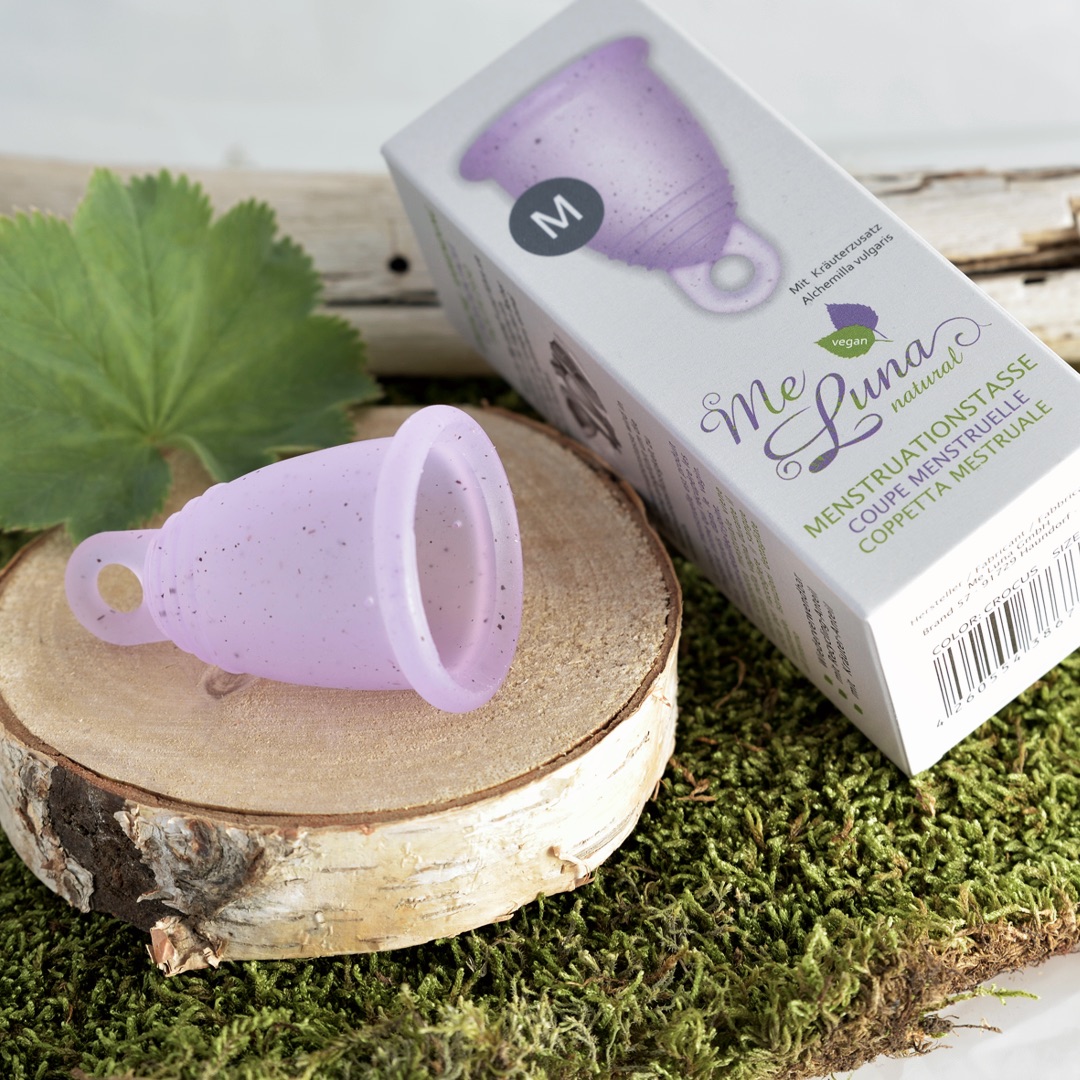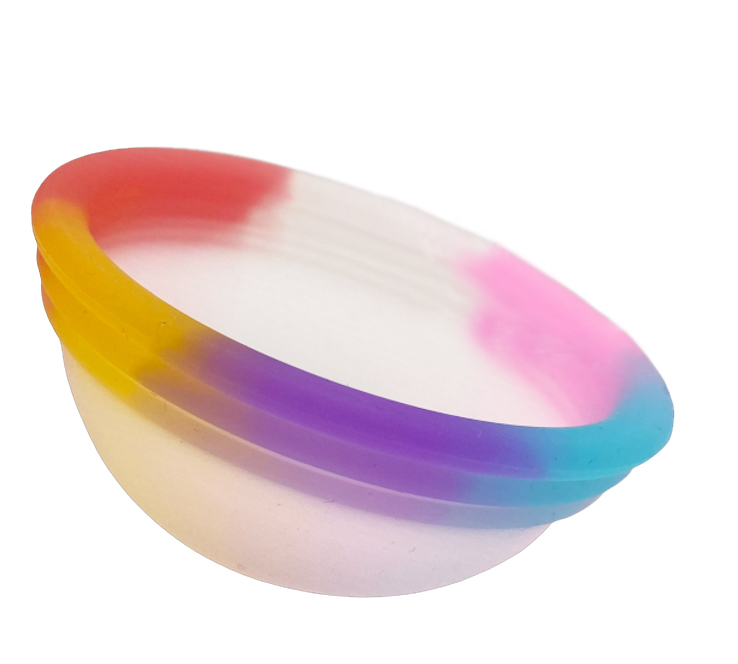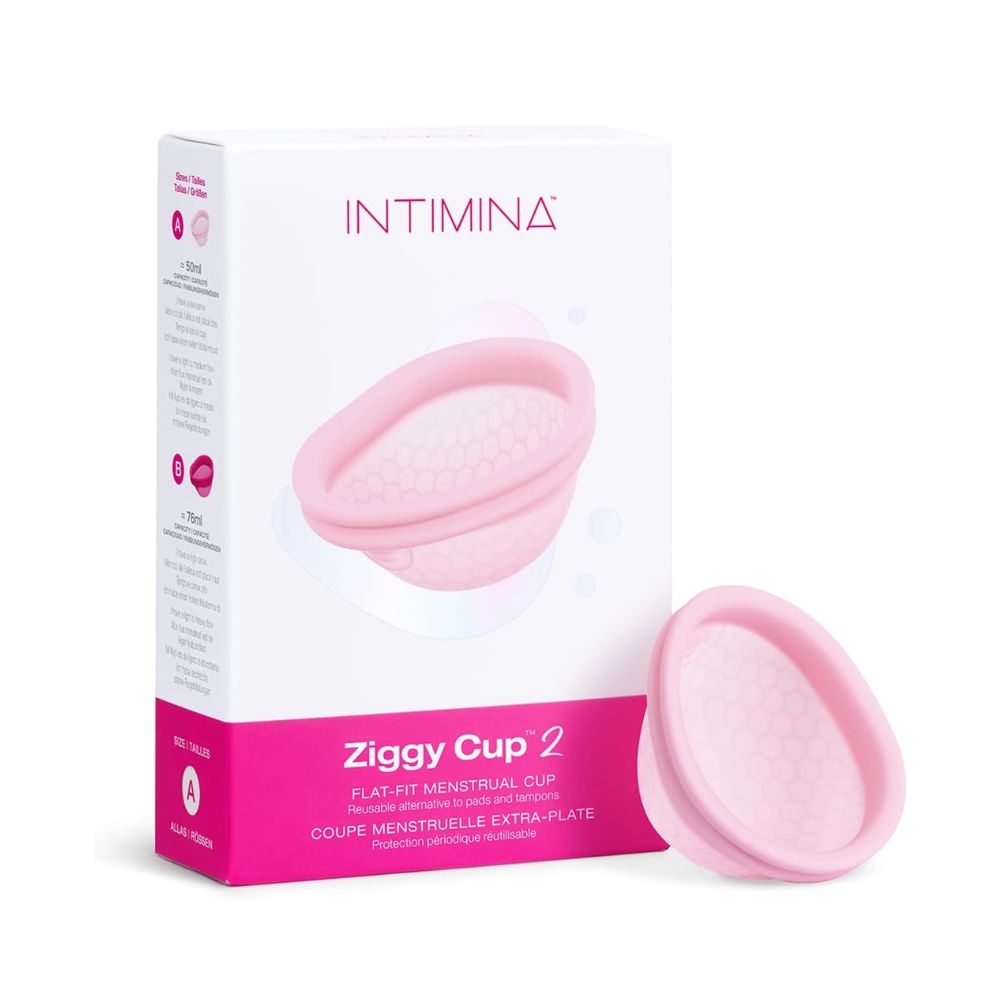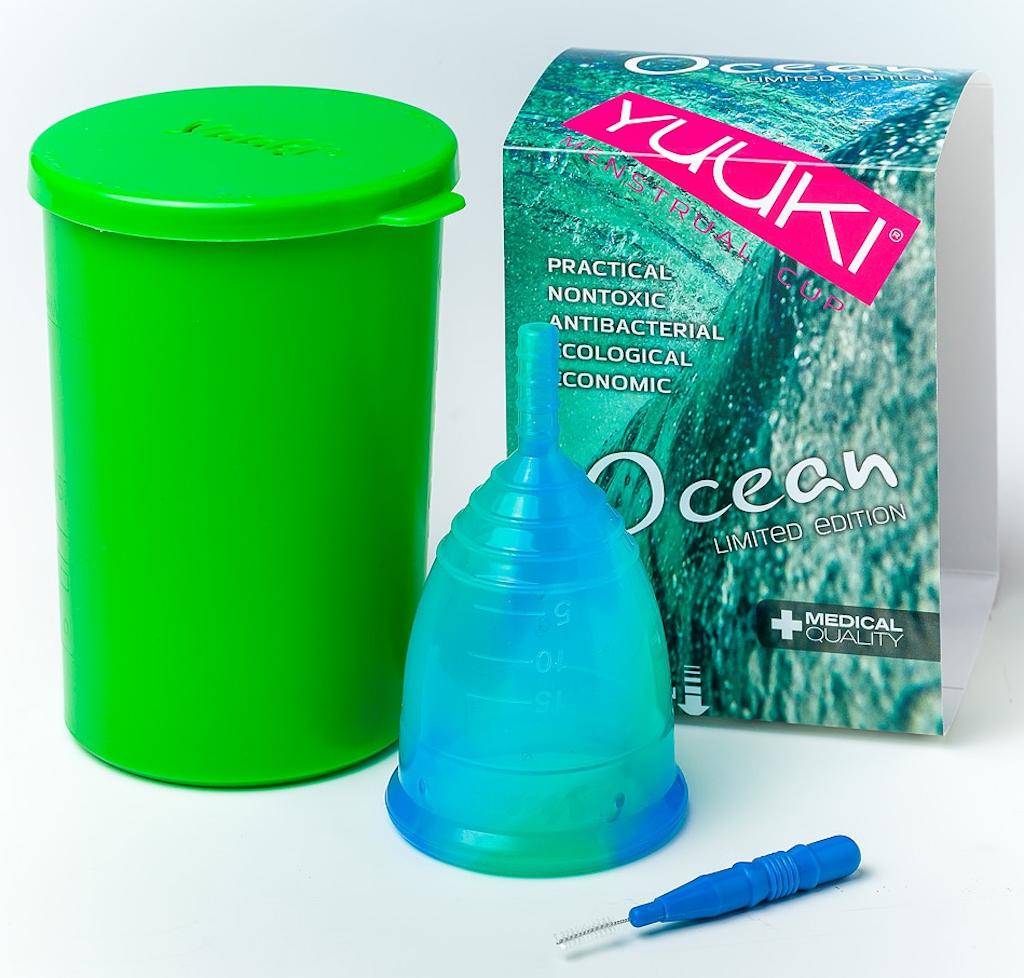Frequently Asked Questions
You are new to menstrual cups and a million questions are rushing to your head like how to use them, choose them, clean them and all kind of other random questions you may have. We’re here to help you find the answers to your questions. Don’t be shy to ask Us if you don’t find your answer below.
Menstrual cups & your Sex life
Can a virgin use a cup?
Some cultures or religions have certain beliefs about internal menstrual products, or the hymen. A menstrual cup can alter the hymen. But if this is not an issue for you, your family and/or your culture– then yes, physically, there is no reason why a virgin cannot use a cup.
There are menstrual cups specifically designed for teenagers (Lily cup One). Period panties are a great alternative if you don’t want to use anything internally.
Can I receive oral sex while wearing a cup?
Definitely yes, no more damp string sticking out making you feel unsexy. The cup will act as a barrier letting you reassured that there will be no leaking or evidence that you have your period. You can also use a menstrual disc allowing penetration even when you are menstruating.
Can I have sex while wearing the cup?
Not penetrative vaginal sex. The cup would get in the way, or be squeezed/crushed, so the seal would be broken. You should always remove your cup before any penetrative vaginal sex. If you want to have sex while having your period without having to buy a new set of bed sheets, some people use baby sea sponges or menstrual discs.
How Can I have mess free sex during my cycle?
If you want to have sex when menstruating without having to buy a new set of bed sheets, there is fairly new invention called menstrual discs. Instead of sitting where a traditional tampon or menstrual cup would, the menstrual disc rests just below the cervix and away from the vaginal canal leaving room in the vaginal canal for whatever your feel like.
Read my article Menstrual Cups VS Menstrual Discs
Menstrual cups, contraception & pregnancy
Can a cup be used as a method of birth control, or STD protection?
No it cannot. Furthermore, the menstrual cup is not a contraceptive device and does not protect you against sexually transmitted diseases (STD).
Contraceptive Diaphragms are a good natural solution and work in quite similar ways a menstrual cup does. You have to use a contraceptive gel with it to be efficient.
Can the cup be used along with contraceptives?
You should always remove the cup before having penetrative vaginal sex. But with some products like Nuvaring, the pill, the patch, or an IUD– they should not harm your cup. It is usually not recommended to use things like contraceptive gel or foam with a cup though, because not much is known about the effects of those products on the cup’s material. As always, consult with your doctor before combining these products.
Can I use a menstrual cup if I have an IUD?
Many women who use a menstrual cup also have an IUD. Some menstrual cup manufacturers support the combination use of a menstrual cup and an IUD, while others do not. It is important that you read all the information in your product instructions. As with all medical concerns, you should also ask your doctor for additional advice. But if you compare a cup with a tampon, the tampon sits much closer to the cervix than a cup does since it’s almost only half way in the vagina while the tip of the tampon almost touch the cervix. I have personally used cups which I had a IUD without any issue. Same thing goes for Nuvaring.
I am pregnant, but sometimes, I still spot or have discharge. Can I use the cup for times like this?
Pregnant women should not use internal vaginal products, for any reason, unless directed to by their doctor. When you are pregnant, your vaginal ph levels are far more sensitive than usual, making you prone to infection, even when you are not doing anything differently. For this reason, unless you are engaging in sexual intercourse, it is recommended that the vagina remain clear of foreign objects as much as possible during this time, again, unless otherwise directed by your doctor.
I just had a baby, and I am bleeding heavily. Can I use a menstrual cup?
The menstrual cup should not be used for post-natal bleeding. Because there are open wounds healing up inside, there is a greater risk of infection with any kind of foreign objects, no matter how clean. Please wait until your doctor says you can use internal menstrual products again, before using a menstrual cup (same goes for tampons).
For your comfort and safety you can use a period panty.
I’m going through menopause, and my cycles are very unpredictable. Can I still use a cup?
Absolutely! Vaginal dryness is normal at this stage of a woman’s life and you may even find that the cup will make it more comfortable since it won’t absorb anything. If you happen not too bleed the cup won’t affect you in any way. You can use Water based lubricant to make the insertion more comfortable.
Your menstruation & special cases
Will my cup get full and leak?
A tampon can hold from 6ml for the light flow one to 18ml for the super +. The smallest cup can hold from around 15ml up to 42ml for the biggest one (Me Luna XL). So even the smallest cups are the equivalent of a super + tampon. There is no absorption happening, it is all collected in liquid form. So even if you keep your cup all day long, it is very unlikely that it will get full. See the comparison table Tampons Vs Menstrual cups.
I pass large clots during some days of my period. Can I use a cup?
Yes you can, the cup would be emptied more often than every 8 hours. A bit of trial and error may be in order, but one quickly learns how often to empty the cup to meet their specific needs.
Can I use a menstrual cup if I have a prolapse?
Menstrual cups aren’t for everyone. Be sure to discuss your options with your doctor, especially if you’ve had uterine prolapse, which is a condition in which your uterus slips into the vagina because supporting ligaments and muscles have become weakened or stretched. This condition is most common in postmenopausal women who’ve given birth vaginally.
I have a tilted cervix / uterus. Can I still use a cup?
Many women with these conditions still successfully use a menstrual cup. Since it is worn lower in the vaginal canal it does not interfere with the position of the uterus. But of course, it is always best to consult with your doctor on this, as he/she can give you more details on the shape of your anatomy.
You may want to read my article about Cervix and Menstrual Cups
Is there an increased risk of Urinary Tract Infection (UTI) when using a cup?
Menstrual cups are not associated with an increased risk of UTI. You may need to trim the stem a bit so that it is not protruding near to the urethra. Also, it is important to wash and rinse the cup and the stem thoroughly using a mild perfume free soap, so that residue is not left on the cup as they may cause irritations. As for all gynecological concerns, we suggest you consult your doctor. You can also Sanitize your cup with Milton tablets to be sure to kill all bacterias.
Menstrual cups material & safety
Before first use, what should I do with my cup?
Check that the air holes at the top of your cup are open. Wash your hands and clean the cup by washing with water and a mild perfume free soap. Then boil it in a large amount of water for a few minutes before first use. Make sure that there is enough water so that the cup does not burn on the bottom.
I am allergic / sensitive to latex. Can I still use the cup?
Yes, only the brown Keeper cup is made from latex. The other menstrual cups are made of medical grade silicone or TPE (thermoplastic elastomer) and can still be used even by people with latex sensitivities.
When do I need to check with my doctor before using a menstrual cup?
- you’ve ever had TSS (Toxic Shock Syndrome)
- you’ve recently had gynecological surgery, given birth, or had a miscarriage
- you have a vaginal infection
- you’ve never had sexual intercourse and you’re concerned about maintaining your hymen
Menstrual cups are made of silicone, I thought silicone was bad for my body?
Let’s get one fact straight, when you are thinking silicone you are thinking of silicone toxic leaking on breast implants right? Menstrual cup are made from medical grade silicone, this is a solid stable piece of silicone (with the feel of soft rubber) that cannot leak or release molecules into the body. The same silicone used to make cups is also widely used in the medical industry for internal valves as well as baby bottle teats and breast pumps.
Does menstrual cups contain any phthalates or Bisphenol A (BPA) like some silicones and plastics do?
Absolutely not! they are 100% medical silicone grade or in the case of Me Luna TPE (thermoplastic elastomer) which is also free of those chemicals.
Be aware of where you get your cup from, many websites sells some very cheap cup from china that are not from certified silicone. It has to be a high quality medical grade to be safe to use internally.Please do not compromise your health to save a few bucks. All brands listed on this site are safe.
Have any scientific research been done about menstrual cups?'
Menstrual cups cheap and reusable as they are have been under scrutiny from the moment they became popular. Their direct competitors such Tampax, Always, Kotex to name a few who had much to loose if women suddenly stopped needing their products.
Menstrual cup brands were usually ran by individual motivated entrepreneur with visions and couldn’t afford costly research.
The good news is that in 2019 a serious study has been done and guess what it says? Cups are safer and less prone to leaks than any other disposable protection. Read the study on thelancet.com
How to care for your menstrual cup
Must the menstrual cup be sterilised?
Most menstrual companies recommend it, at least once a month. You should of course wash the cup daily with mild, perfume-free soap (a feminine wash, mild natural soap, or cup manufacturer wash works very well), and warm water. Try to do so each time you empty it. As for sterilizing, each brand has a different recommended method. For most, once a month (preferably on the first day of your period before you use the cup). Check cleaning products available recommended by menstrual cup brands.
How often do I have to empty/wash the cup?
It depends on your flow, and the size of cup you get– all women are different. If you have an average to heavy flow, the cup can usually sit well for 4 – 10 hours. Some women with a very light flow (or on a light day) can go as long as 12 hours. We recommend to empty and wash your cup anytime from 6 to 12 hours. Recommendation varies depending on the manufacturer, use common sense and do not exceed 12h to be on the safe side. I advise 8h to be on the safe side.
Ways to sterilise your cup?
- Boil your cup in water for 20 min (careful to not burn it).
- Soak in 10% white Vinegar 90% water solution.
- Soak in sterilising tablets with water.
- Some brands sells great cleaning Kits to sterilise your cup in the microwave. It allows you to have a small recipient just for your cup that will take no space when not in use. It’s specially useful while traveling or if you have roommates.
- Use a portable sanitizer like the Emanui cup cleaner
- Use Sanitizing wipes if you are on the go
Read more in depth on: How to clean your menstrual cup
Can I use any type of soap to wash my cup?
Wash the menstrual cup carefully in warm water and soap to clean it sufficiently before reinsertion. Use mild soap for washing (intimate soap is fine). The cup should first be rinsed in cold water, so that menstrual blood does not stain the cup or make it develop an odor. When water is not available or it is not convenient to boil the cup, it is okay to wipe the cup with toilet paper and/or a disinfecting wipe. You can give it a wash the next time. Do check the little holes near the rim of the cup are clean. The size of the holes varies depending on the brand. If they are small and a simple rinse is not enough, you can use a thin interdental brush. Keep one just for that purpose.
How do I store my menstrual cup when I don’t use it?
Never store your cup in a plastic bag, or an air-tight container, as this can cause mold. A cup must have air flow when being stored away for the rest of the month. The best thing to store a menstrual cup in, is clean, dry cloth pouch (which are provided), and away from extreme heat, cold, or sunlight. After your period is over and you have cleaned your cup, store it in the cloth pouch.
Is there anything that can damage my cup?
Remember to never use silicone based products as they can damage the cup. If you want to use lubricant use the water based ones; no silicone or oil base (except the Me Luna made out of TPE). Just clean it as recommended and keep it away from extreme temperature and in its provided pouch when not in use away from your pets and children :) You will then ensure a maximum lifespan that can last up to 10 years.
Can I wash my cup in my washing maching or dishwasher?
No, even though it sounds obvious, I add it to the list of questions because I have read several times on some comments or blogs women doing it or talking about it. Your cup would be fine and handle the heat, but the product used are very harsh and could damage your cup or leave residues that could be harmful to your body. Just hand wash it with a neutral soap.
Can I cut the stem?
The stem of the cup can always be trimmed to your convenience. The stem is only there to help you pinch the bottom of the cup to break the seal at the removal. You shouldn’t pull the stem directly as this won’t break the seal and it would just feel uncomfortable. The stem should be entirely inside or it could cause irritations to your labias.
If your cup doesn’t have a flat tab or a hollow tube as a stem I wouldn’t advise you to cut anything. For example if it has a stem like a little ball stem. If you feel like you don’t need any stem at all, I recommend a No stem cup.
Read my article: How to use the stem during menstrual-cup removal
How do I empty and clean my cup in a public restroom?
Remove and empty it the same way you would at home, but you can bring some bottled water, or a wet paper towel in the stall with you for rinsing/wiping the cup. Then simply reinsert it. You can give the cup a regular wash after you get home. It is often a concern for women, but since you have to change it most likely twice a day. you do it once in the morning at home and throughout the day it is not uncommon to find a toilet with a sink inside. I personally have a routine to do it while I am in the shower. You will find your own convenient time.
Read my article: Menstrual cups in public bathrooms
What if there is no clean, potable water available to clean my cup with?
You can clean it as you would in a public restroom, just wipe it out with toilet paper, and wait until you have access to drinking water for a proper cleaning. Disinfectant wipes can also work but wait until the cup dries to avoid any irritation. otherwise just empty it, put it back with clean hands and you can clean it properly when you get home.
Read my article: Menstrual cups in public bathrooms
Check out the cups we have in our shop
-

Me Luna natural is a medium-soft menstrual cup (Softness CLASSIC)....
- Select options This product has multiple variants. The options may be chosen on the product page
-

-

Ziggy Cup™ 2! made from reinforced, flexible medical-grade silicone, this...
- Select options This product has multiple variants. The options may be chosen on the product page
-

Yuuki OCEAN, a menstrual cup with the colors of the...
- Select options This product has multiple variants. The options may be chosen on the product page
